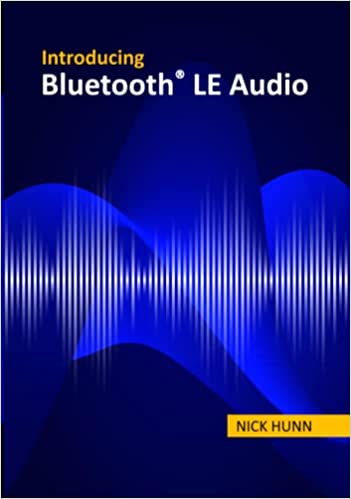For more than 30 years, the Audio and Media Technologies division at Fraunhofer IIS has helped shape global standards and technologies in the fields of audio and moving picture production. Starting with the creation of mp3 and continuing with the co-development of AAC and the Digital Cinema Initiative test plan, a wide range of consumer electronic devices, computers, and mobile phones use Fraunhofer systems and technologies.
Recently, I had an opportunity to speak with Fraunhofer IIS’s Head of Low Delay Audio Coding Group Markus Schnell about the impact the new Low Complexity Communication Codec (LC3) will have on the next generation of Bluetooth® audio.
Q&A with Markus Schnell
What led to your participation in the development of the Bluetooth LE Audio specifications?
I lead the technical team that developed the LC3 for audio. The Bluetooth technology standard made it easy to connect devices wirelessly, but Bluetooth Classic Audio was not without its limitations. We joined the Bluetooth Special Interest Group (SIG) Hearing Aid group to develop the LC3 with Ericsson and in close cooperation with Bluetooth SIG members. This allowed us to address all requirements.
What is the difference in quality between LC3 and SBC?

For voice services, LC3 will upgrade Bluetooth headsets to the latest in state-of-the-art audio quality, which has already been deployed in HD Voice+ VoLTE networks. Here, the introduction of the Enhanced Voice Services (EVS) standard audio codec brought a new level of speech and audio quality to mobile services. This level can now be delivered through Bluetooth® accessories as well.
For music, LC3 solves two fundamental quality challenges: All kinds of audio can be transmitted with excellent quality, and it cuts the data rate by 50 percent, which leads to longer battery life or the ability to develop smaller devices.
What market challenges will Bluetooth LE Audio enable you to address?
All Bluetooth LE Audio headsets/voice devices will mandate the Super Wideband (SWB) quality and will be compatible with HD Voice+. This gives consumers a good reason to buy a new Bluetooth LE Audio device. Everybody using Skype, Facetime, or any regular mobile phone call – as more and more mobile networks support SWB – will be able to hear a clear and impressive difference between the former hands-free device and the new Bluetooth LE Audio.
What is the importance of a standard, and how will Bluetooth LE Audio help further interoperability and enable scale in the audio market?
In the past, there was a tendency for vendors to develop their own proprietary audio codec and profile for Bluetooth transmission in order to overcome the limitations of the SBC codec. With regards to interoperability, this means that consumers need to buy their mobile phone and Bluetooth® headset or headphones from the same vendor to ensure the best performance. With Bluetooth LE Audio and LC3, vendors can switch back to standardized solutions, which opens up the market for manufacturers of playback devices.
When do you expect to see Bluetooth LE Audio products and solutions hitting the market?
I see a lot of companies currently getting LC3 implementations ready for the market. I’m definitely looking forward to buying my first Bluetooth LE Audio high-quality headphone with LC3 support. I hope I can do so next year.
![]()
FEATURED PROGRAM
Bluetooth Member Promotion Program
Are you a Bluetooth member designing innovative wireless solutions? You may be eligible to participate in the Bluetooth Member Promotion Program.









![packetcraft logo tagline[1]](https://www.bluetooth.com/wp-content/uploads/2024/03/packetcraft_logo_tagline1.png)




![2312 CES Handout Images FINAL existing pdf 464x600[1]](https://www.bluetooth.com/wp-content/uploads/2024/01/2312_CES_Handout-Images_FINAL-existing-pdf-464x6001-1.jpg)
![2312 CES Handout Images FINAL unlimited pdf 464x600[1]](https://www.bluetooth.com/wp-content/uploads/2024/01/2312_CES_Handout-Images_FINAL-unlimited-pdf-464x6001-1.jpg)











